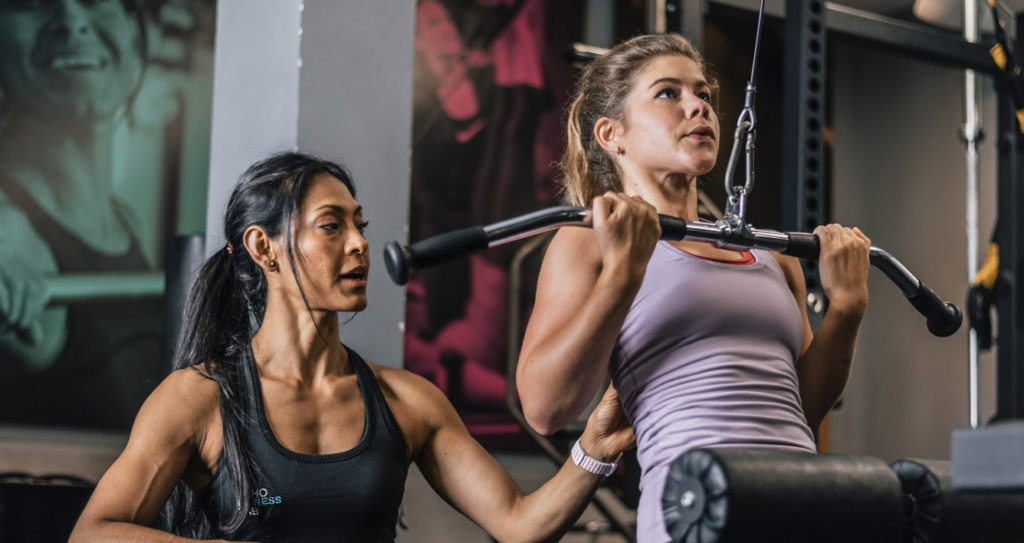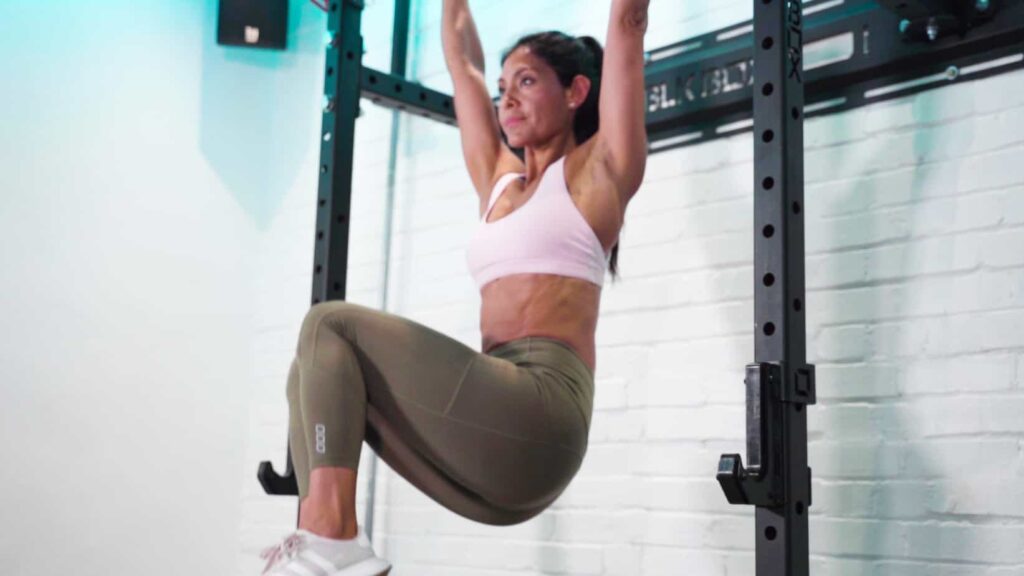The Importance Of Rest Days
Getting in your workouts and nailing your nutrition is crucial when it comes to achieving your fitness goals – we all know that. Chances are you take the time each week to schedule in your training sessions and think about what your meals are going to look like. But are you also planning your rest and recovery?
Adequate recovery time is hugely important, but it’s all-too-often overlooked. And this is true of everyone – fitness junkies sometimes dismiss rest as unnecessary and boast that they train hard every day, while on the other end of the scale, fitness newbies may feel they have some catching up to do and end up setting themselves ambitious aims to train hard five, six, seven times per week to maximise their progress.
But in reality, everyone – whether they’re new to fitness or have been training for a while – needs to give their body enough time to rest and recover. It might be tempting to go all-out, but rest is a crucial part of your training. If you’re wondering why, keep reading.
You’ll notice we’ve added links to other Fitness Lab blogs throughout this article. We’ve added these blogs so you can get more in-depth information on any subject we’ve covered here. You can start exploring these detailed blogs here: Why Are Gym Rest Days Needed?
Allow muscle recovery and growth
Anyone who has challenged themselves in the gym will be familiar with DOMS – muscle soreness and stiffness that lasts for a couple of days after a tough workout. This pain because exercise creates microscopic tears in our muscle tissue that occur when we work out. It’s a completely normal part of the muscle growth process – it is when these muscle tears knit together and repair that the growth and strengthening occurs.

These small tears naturally start to repair when we stop overworking them. The muscle fibres compensate for the damage by physically re-building themselves to be bigger and stronger, so that they can cope better with the stress from an exercise routine in future. Refusing our body the chance to recover therefore means compromising our muscle’s ability to grow.
This is where workout splits can come into play if you’re lifting heavy on a regular basis. Put simply, this means staggering your workouts in such a way that allows you to vary the muscle group you’re working, so that each one has a chance to rest before being exerted again. When you train with us at Fitness Labs, one of the first things your coaches will do with you is to sit down and chat about your goals and your current schedule. They will put together a personalised workout plan that optimises your ability to reach your goals and will factor in adequate rest time, to make sure that you don’t overtrain.
If you’d like to learn more what your muscles do when you take a rest day, you can get more indepth information in our dedicated blog: Are Rest Days Good for Muscle Growth?
Reduce your risk of injury
A really common consequence of overtraining is injuries. If your body is refused the chance to repair after intense workouts, it could lead to weaknesses and injuries that prevent you from training properly. Overuse injuries can be avoided by giving your joints and muscles the time to rest in between workouts. The rest time you need will vary depending on the type of training you’re doing and how experienced you are when it comes to fitness – don’t worry, your coach will be there to guide you through this!
Immune system health
Regular exercise has been shown to boost immune health (for example, studies have shown that people who exercise regularly have a higher number of the bacteria-attacking cells called macrophages). However, intense exercise does put your body under a certain degree of stress, so it’s important not to overdo it. When it comes to your immune system, there are a number of ways over-exercising can impact you. Notably, our bodies’ stress hormones (cortisol and adrenaline) raise blood pressure and suppress the immune system. This has been linked to a higher risk of infection in endurance athletes after extreme exercise (e.g. triathlons).
Ensure you enjoy your workouts and prevent burnout
There are lots of physical advantages to prioritising rest and recovery, but it’s equally important to consider your emotional and mental wellbeing, too. Mental fatigue can be just as draining as physical fatigue, and taking a rest day can help to rekindle your desire to train, making sure that your training stays FUN.

You should never feel as though you’re having to drag yourself to the gym – if that is the case, then it’s a sign that you’re tired and need a day to reset. Enjoy a rest day or two, then come back strong and find the fun in your workouts.
Create sustainable fitness habits
Arguably the most important factor when it comes to achieving your goals is consistency, with both your nutrition and your workouts. So, you need a level that you can sustain – you might manage a couple of days of hitting the gym at max effort, but pretty soon you’re going to burn out. Balance out higher intensity workouts with steadier sessions, stretching and complete rest days.
If your workout regime isn’t sustainable, you won’t stick to it, which means you won’t see results. This can lead to a vicious cycle of bursts of intense training, burning out, loss of motivation and periods of not doing anything, before again picking up an intensive new regime that you will ultimately abandon. Stick to a steady-paced programme that you can maintain, trust the process and the results will come in time.
Can rest days help with weight loss?
If you’re focused on losing body fat, it can be tempting to just forget about rest days and concentrate on burning calories at all costs.
The trouble is, ditching your rest days does come at a cost. A lot of the time, this cost impacts your body’s ability to burn the fat that you’re keen to get rid of.
If you approach exercise with a ‘no rest days’ mentality, you’ll likely end up increasing the amount of stress hormones in your system. Stress hormones – in particular ‘cortisol’ – can do all manner of damaging things to your ability to burn fat. If you’re experiencing poor sleep, an increased tendency to snack, and a lack of focus, it’s possible that cortisol is at least partly to blame.

As we’ve already covered, it’s important to incorporate rest days to make sure you’re building muscle effectively. Even if you’re not weight training, adding muscle to your body is the single most effective thing you can do in the gym if you want to burn fat.
This is because muscle requires energy just for maintenance. The more muscle you have, the more calories you burn at rest. Therefore, anything you can do to encourage growth of your muscles makes you an even better calorie-burning machine. What’s better than burning calories while you rest?!
For a more in-depth look at losing weight and rest days, take a look at our blog: Why Are Rest Days Important For Weight Loss?
How many rest days per week should I take?
It really depends on how long you’ve been training and what type of training you do. There is no one-size-fits-all. You might be able to tell that you need a rest day before you next workout because you feel too tired to get through what you normally can. Maybe you feel like you’re having to drag yourself to the gym, whereas you’d normally leap at the chance to do a workout.
The best advice – as with so many things related to health and fitness – is to take the time to get to know your body and listen to what it tells you. Understanding what too much exercise feels like and how much rest you need is an important part of staying healthy.
What to do on a rest day?
Taking a rest day doesn’t necessarily mean spending a day glued to your sofa, binge-watching Friends and eating aaaaaall the snacks (as good as that might sound).
Instead, it’s worth understanding what an ‘active rest day’ is. This is a kind of active recovery that might mean going to a relaxing yoga class, or still going to the gym but avoiding high-intensity or heavy workouts. You could warm up and go through mobility drills or stretches, or skip the gym entirely and go for a walk, gentle swim or cycle. Low impact exercise still counts as rest (“active rest”) and, crucially, getting enough rest can be good not just for the body for the mind, too.
We’ve explored some rest days ideas in our dedicated blog: What Should I do on Gym Rest Days?
What should I eat on rest days?
There’s no blanket rule around what you should eat on rest days. Ultimately, the answer depends on what your health goals are. Beware of any source of information that says you should always cut your calories on rest days – this simply is not true for most people.

If your only goal is fat loss, there may be some merit in reducing calories while you let your body recover.
However, if you’re looking to build muscle at the same time as reducing fat (one of the most effective ways to do so), then reducing calories on rest days can counteract your goals somewhat.
Of course, there are lots of people who train with the goal of bulking up. For people with this goal, you may even want to look at increasing calories on rest days.
So, as you can see, there’s no one-size-fits-all answer. Recovery days – like your workout routine – should be tailored to you. If you’re interested in getting a more in-depth look at what rest days might look like for different people with different goals, take a look at our blog: What Should I Eat on Rest Days?
Interested to learn more? Book a free consultation with one of the Fitness Lab coaches today.